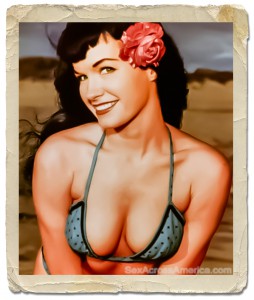(5/26/14) Art and publishing trends are really no different than those for style and fashion in the sense that they’re usually ever-moving targets that are often influenced by whatever’s the flavor of the day in the media, among celebrities or the prevailing technology at the moment. It’s the nature of the beast, fueling entire industries focused on market analysis and data crunching in order to predict–and perhaps even set–whatever wave is coming next. The irony of it all is that the so-called “trend experts” are usually wrong and most waves are only identified in the crystal optics of hindsight, often influenced by some unforeseen confluence of unrelated aspects. In a way, it’s good that logical algorithms cannot precisely account for the unpredictability of what a multitude of humans will choose to care about (or not) on any given day. While it thwarts a foolproof formula for what will cause something to go viral, it at least keeps us one step ahead of becoming one with a hive mind. Perhaps it’s a small step in the grand scheme, but an important one nonetheless.
In any event, hitting that moving target is not nearly as easy as most would have you believe. Take trends in published erotica, for example. While there’s much to be said of general market predictions in the 21st Century’s inaugural decade, few (if any) envisioned that women would be driving the major economic growth areas. It may have been a reasonable presumption to think otherwise, but ultimately the miss was based on flawed thinking and incomplete information. For one thing, it seemed a bit unlikely fifteen years ago that extreme elements of the genre would become more accepted in the mainstream so quickly. Additionally, a key missing ingredient back then was a viable e-reader. Ubiquitous today and getting better all the time, it really hadn’t hit its stride before Y2K, so it likely didn’t factor at all when many were trying to discern what the erotica market might look like in the years just ahead.
While women have historically outnumbered men in favoring written forms of erotica over image-based, it’s only been a short time where the difficulty (and perhaps, perceived embarrassment) of locating and purchasing intriguing (and increasingly, more risqué) fare has been mitigated by electronic means. As convenient and generally anonymous personal device technology advanced since the millennial turn, many women have taken full advantage, passing up any potential “risk” of being discovered by local busy-bodies hovering in “that” section of a bookstore and opting to point, click, plug and play instead. Through virtual systems, supply is significantly increased, access is now much easier and, in many cases, much less expensive; three economic factors leading to exponentially greater consumption–by mostly women.
Since the “50 Shades” phenomenon hit just a couple of years ago, many publishers have not only reported a steady stream of new erotica titles being submitted, but also a distinct movement towards more explicit content. Couple that to recent survey data compiled by Pew Research indicating that women outnumber men in recreational reading along with figures showing “Romance and Erotica” currently as the most popular e-reader genre and it’s pretty easy to see where this is all going.
Well, that is, unless the target moves in yet another unpredictable way again.

